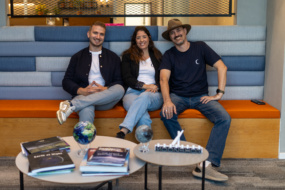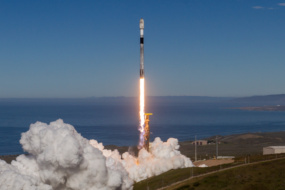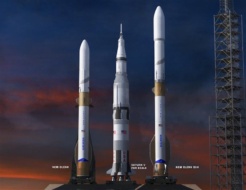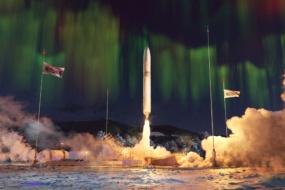A 21-ft tall Honda-built rocket flew 890 feet in the air over Hokkaido, Japan, before descending to land safely—as part of the car company’s reusable rocket program.
The hop, reminiscent of SpaceX’s early reusability tests for Falcon 9 and Starship, returned the liquid-fueled mini-booster within 15 inches of its landing target following the flight, which lasted just under a minute.
Hat, meet ring: Honda, the Japanese automotive giant, announced a $45B technology development plan in 2021 that included investments in lunar activities, and a reusable booster for a small-sat launcher.
The company characterized its rocket program as a research project, with no decisions made about commercialization. Honda has, however, forecast a suborbital launch attempt by 2029.
Japan’s main rocket is Mitsubishi’s expendable H3, which debuted in 2023, while startup Interstellar aims to fly a suborbital rocket sometime this year.
Reuse race: While the Falcon 9 serves as an object lesson in the benefits of reusable orbital boosters, we still haven’t seen another come to market despite serious efforts:
- Blue Origin’s New Shepard reusable suborbital booster is flying regularly, but we’re waiting to see New Glenn demonstrate that tech on an orbital scale.
- Rocket Lab’s Neutron rocket, which aims to compete with the Falcon 9, is aiming to fly for the first time this year—but it’s not clear whether Neutron will debut with a reusable booster.
- Several organizations in China are pursuing reusable rockets. Perhaps the furthest ahead is Landspace, a company that expects to conduct a reusable booster test later in 2025.
- Stoke Space is developing a fully reusable two stage launch vehicle that has gained support from the Pentagon; Stoke has said in the past that it will debut its vehicle this year.
Respect your ancestors: Both SpaceX and Blue Origin took advantage of work on a reusable booster performed by the Delta Clipper project, which emerged from the Strategic Defense Initiative in the early 1990s before being taken over by NASA. Engineers on that program developed a prototype vehicle that performed several test hops before Clipper was canned.




